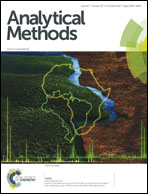A preliminary investigation to group disparate batches of licit and illicit diazepam tablets using differential scanning calorimetry
Abstract
Increasing numbers of illicit and unlicensed medicines are in general circulation and regularly seized by the police and other regulatory authorities. Forensic identification of seized tablets tends to focus on visual appearance and chromatographic identification of the contained drug. This process is relatively time consuming and places a strain on forensic laboratories. It was therefore of interest to investigate the possible application of differential scanning calorimetry (DSC) as a fast and efficient tool to facilitate the identification of contained drug/s and associated tablet excipients. Sixteen different cases (Cases A to P) of diazepam tablets obtained from Police Scotland were characterised based on visual appearance (colour and manufacturers' logos), physical attributes (size, weight and hardness), drug type, drug quantity (HPLC) and thermal properties (DSC). Raw DSC data was further processed using principal component analysis (PCA) as an objective assessment of the thermograms obtained with a view to statistical grouping of different cases. Cases J/K, M/O and L/P could be paired on visual appearance and Cases B/C/E/G and J/K/L/P on tablet hardness (17–23 and 80–89 N respectively). HPLC indicated that 75% of the cases examined contained diazepam but less than half of these contained the recognised amount (10 mg); Cases B/E/L/P contained phenazepam and J/K contained etizolam. The thermal signatures of individual tablets provided by DSC produced qualitative information about both drugs and excipients, indicating lactose in Cases D/F/H/I/J/K/M/N/O and Emcompress™ in B/E/L/P. In particular, DSC coupled with PCA provided confident groupings of A/C/G, B/E/L/P and H/I/J/K, and specific pairings of B/E, L/P and F/N.


 Please wait while we load your content...
Please wait while we load your content...